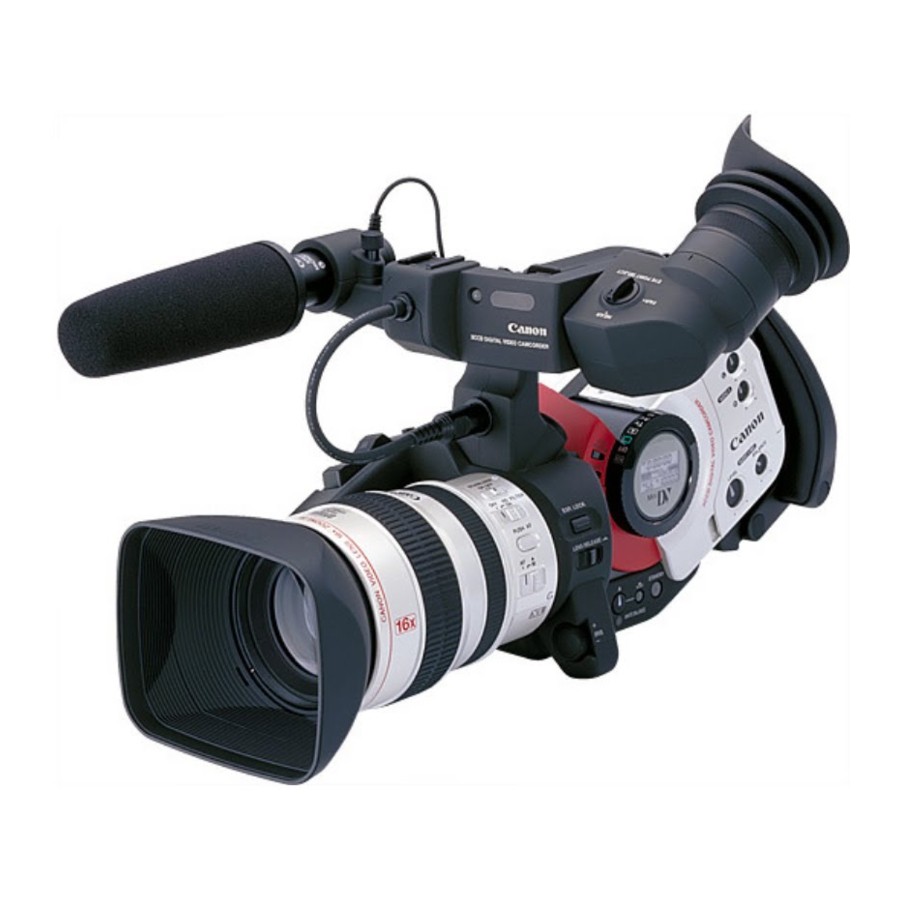Canon XL 1 사용자 설명서 - 페이지 24
{카테고리_이름} Canon XL 1에 대한 사용자 설명서을 온라인으로 검색하거나 PDF를 다운로드하세요. Canon XL 1 26 페이지. Camcorder
Canon XL 1에 대해서도 마찬가지입니다: 브로셔 (8 페이지), 사양 (1 페이지), 지침 (2 페이지), 브로셔 및 사양 (8 페이지), 사용자 설명서 (9 페이지), 매뉴얼 (9 페이지)

Choosing whether to preprocess or to avoid rendering
The first question that you should ask is when to apply preprocessing (described in the
next section): during the rendering phase or later. Preprocessing during rendering
generally results in a smaller file, but adds more rendering time. It also means you
can't use an encoding tool for special operations, like inverse telecine.
Basically, to avoid rendering, you use the same codec and file format as your source
video. If you don't preprocess, you don't need to uncompress and then recompress
unmodified frames—instead, you copy them from the source into the output.
Different tools support this process in different ways—in Adobe Premiere Pro, you
turn off the Recompress option in the Video pane of the Export Movie Settings dialog
box. For this process to work, the video must truly be unchanged with the same frame
rate, frame size, pixel aspect ratio, and so on. The simplest way to ensure that no
changes were made to the video is to use the same project preset for export that was
used for import, which is the default behaviour in Adobe Premiere Pro.
When you preprocess, choose the highest frame rate and largest frame size that you
will use.
Choosing a file format for rendering
You can choose from a variety of file formats for rendering. The most common
formats are QuickTime and AVI; both offer good-quality intermediate codecs. You
can also use MPEG-2 at high data rates. Modern tools like After Effects and Adobe
Premiere Pro can export to Windows Media 9 format. It is essential to make sure that
the encoding tool supports the file format.
Choosing a codec for exporting
When you export an intermediate file, pick a codec and a data rate that doesn't
introduce compression artefacts. When you are not preprocessing, it's typical to use
the source codec or Motion JPEG. When you use Motion JPEG, use it in single field
when you export as progressive scan, or interlaced when you export as interlaced.
For AVI files on Windows, the Huffyuv codec is quite popular.
Deinterlacing video
The most basic and critical form of preprocessing for the web is deinterlacing. Most
video is produced and edited as interlaced (although, an increasing amount is done as
progressive scan). But almost all web video is encoded as progressive scan. If the
source frame of video is left with interlaced lines intact, the output shows the stacked
lines. The lines look bad, but worse, those lines have sharp edges and are difficult to
encode. So, at the same bit rate, deinterlaced video shows fewer artefacts than
interlaced video.
Cropping
Cropping is excluding areas of the source frame from inclusion in the output frame.
Content composed for video normally confines critical elements to what are called
24
